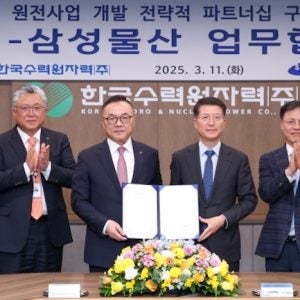 The US Department of Energy’s (DOE’s) Office of Nuclear Energy said on 29 July that the Oak Ridge National Laboratory (ORNL) and Analysis and Measurement Services Corporation (AMS) had recently completed testing of sensors for small light-water reactor systems. The performance data will be shared with US nuclear companies to improve sensor instrumentation for advanced light-water small modular reactors (SMRs). The data could also be leveraged to support other advanced reactor types cooled by gas, liquid metal or molten salt.
The US Department of Energy’s (DOE’s) Office of Nuclear Energy said on 29 July that the Oak Ridge National Laboratory (ORNL) and Analysis and Measurement Services Corporation (AMS) had recently completed testing of sensors for small light-water reactor systems. The performance data will be shared with US nuclear companies to improve sensor instrumentation for advanced light-water small modular reactors (SMRs). The data could also be leveraged to support other advanced reactor types cooled by gas, liquid metal or molten salt.
ORNL tested nuclear-grade resistance temperature detectors (RTDs) using a thermosyphon test loop and a specialised steam loop constructed specifically for the project. The rugged temperature sensors were examined at the expected operating conditions of an advanced SMR that uses natural water circulation to cool the reactor.
Researchers also assessed the sensor response time needed to detect changes in the coolant conditions that would require the reactor to safely shut down.
“Because the signals involved are used to initiate a safe shutdown of the reactor during an incident, validation of the instruments’ ability to perform is subject to strict regulatory scrutiny,” said Nuclear Engineer Nesrin Ozgan Cetiner, lead researcher for the project at ORNL who is currently a Irradiation Scientist at MIT. “Our research results will help guide industry partners in the selection of nuclear-grade RTDs suitable for safety-related temperature measurements of the reactor coolant and main steam of small modular reactors.”
The project was supported by DOE’s Gateway for Accelerated Innovation in Nuclear (GAIN), which makes government research facilities more accessible to the nuclear community in support of the commercialisation of innovative nuclear technologies.“GAIN has helped AMS greatly benefit from the resources and expertise at ORNL to test the performance of sensors and cables for the next generation of nuclear reactors, said Alexander H Hashemian, a senior research engineer for AMS.
One of the motivations for the awarded GAIN Voucher was to characterise sensor performance in conditions relevant to NuScale Power and other natural circulation SMRs, such as Holtec’s SMR-160. “Ultimately our goal is to help DOE’s Office of Nuclear Energy in its mission of helping the nation create a new generation of reactor technology,” Cetiner said. “The commercial companies who will build the reactors and manufacture the equipment need our research insights to ensure that these instruments perform as intended.”
ORNL and AMS are finalising their findings and are preparing guidance to share with industry partners.
Meanwhile, nuclear fuel technology company Lightbridge Corporation announced on 19 July that it had executed a Cooperative Research and Development Agreement (CRADA) with the Battelle Memorial Institute, Pacific Northwest Division, the operating contractor of the Pacific Northwest National Laboratory (PNNL), in collaboration with the DOE. The principal goal of this agreement is to advance a critical stage in the manufacturing process of Lightbridge Fuel™ by demonstrating a casting process using depleted uranium-zirconium material. The total project value of the CRADA is approximately $663,000, with three-quarters of this amount funded by DOE for the scope performed by PNNL.
Seth Grae, President & CEO of Lightbridge Corporation, commented, “We are excited to kick off our second R&D initiative through the DOE and the GAIN programme.” He added that the GAIN programme “continues to be a superb opportunity for Lightbridge to partner with the US government to gain access to world-class personnel and facilities. Partnering with the GAIN programme enables us to save the high costs of time and capital to create these experiments ourselves while retaining our intellectual property and fast-tracking our R&D efforts.
Image: Water loop with the RTD sensor installed (Photo credit: Oak Ridge National Laboratory, US Department of Energy)






